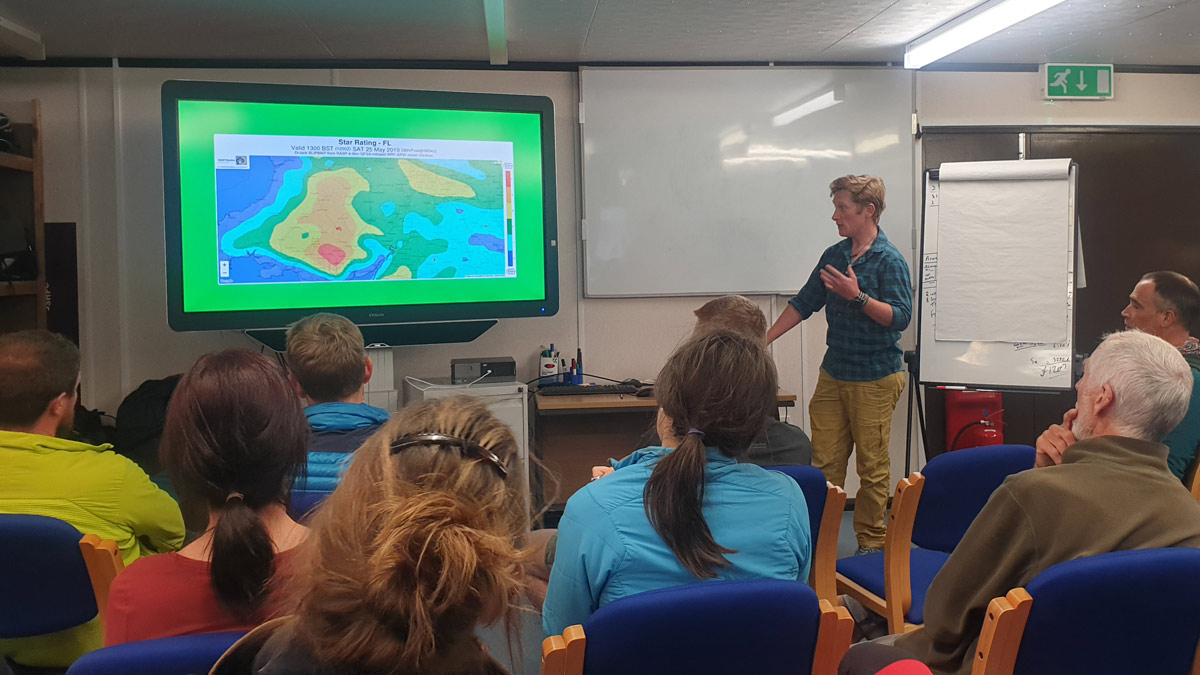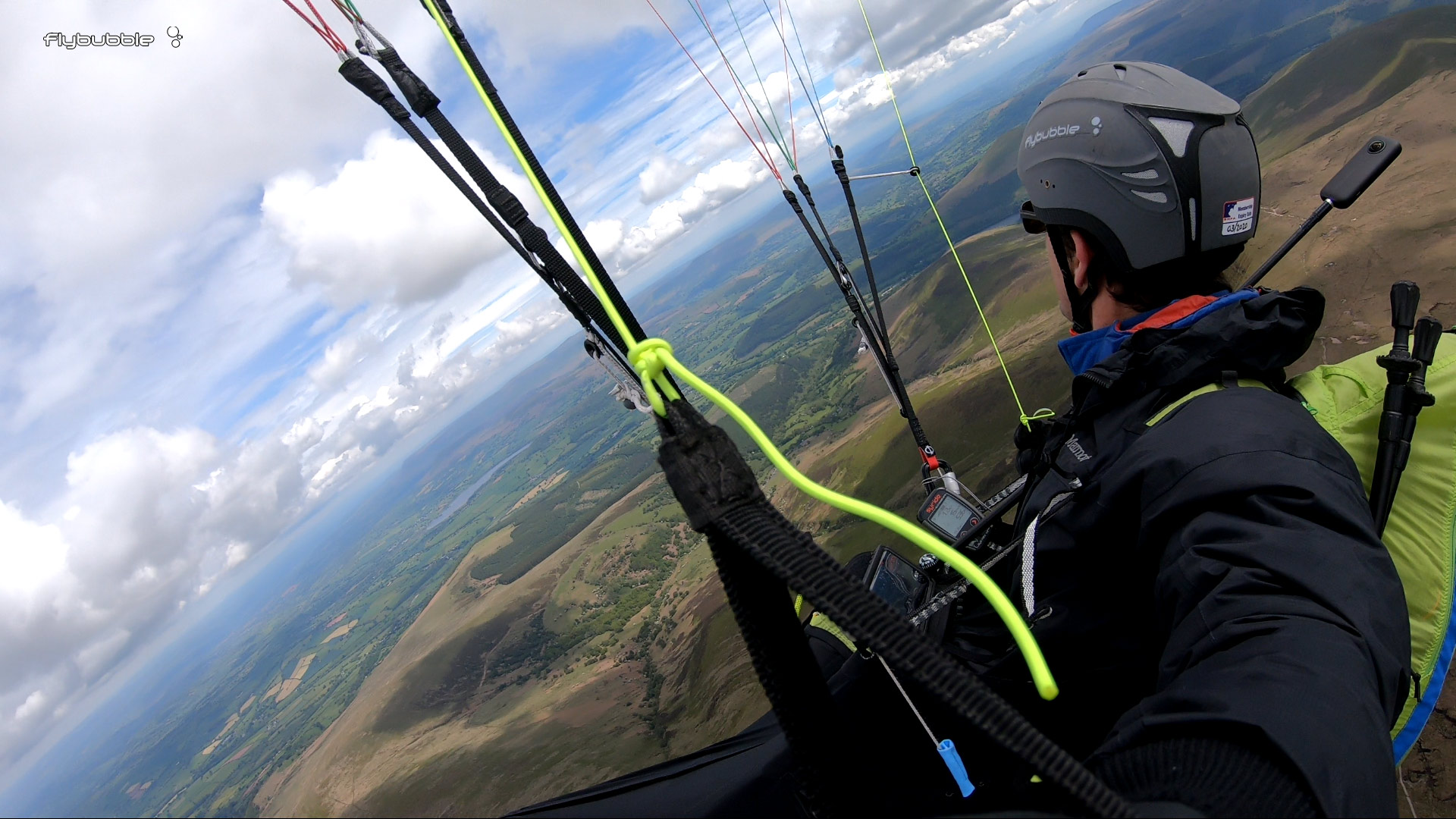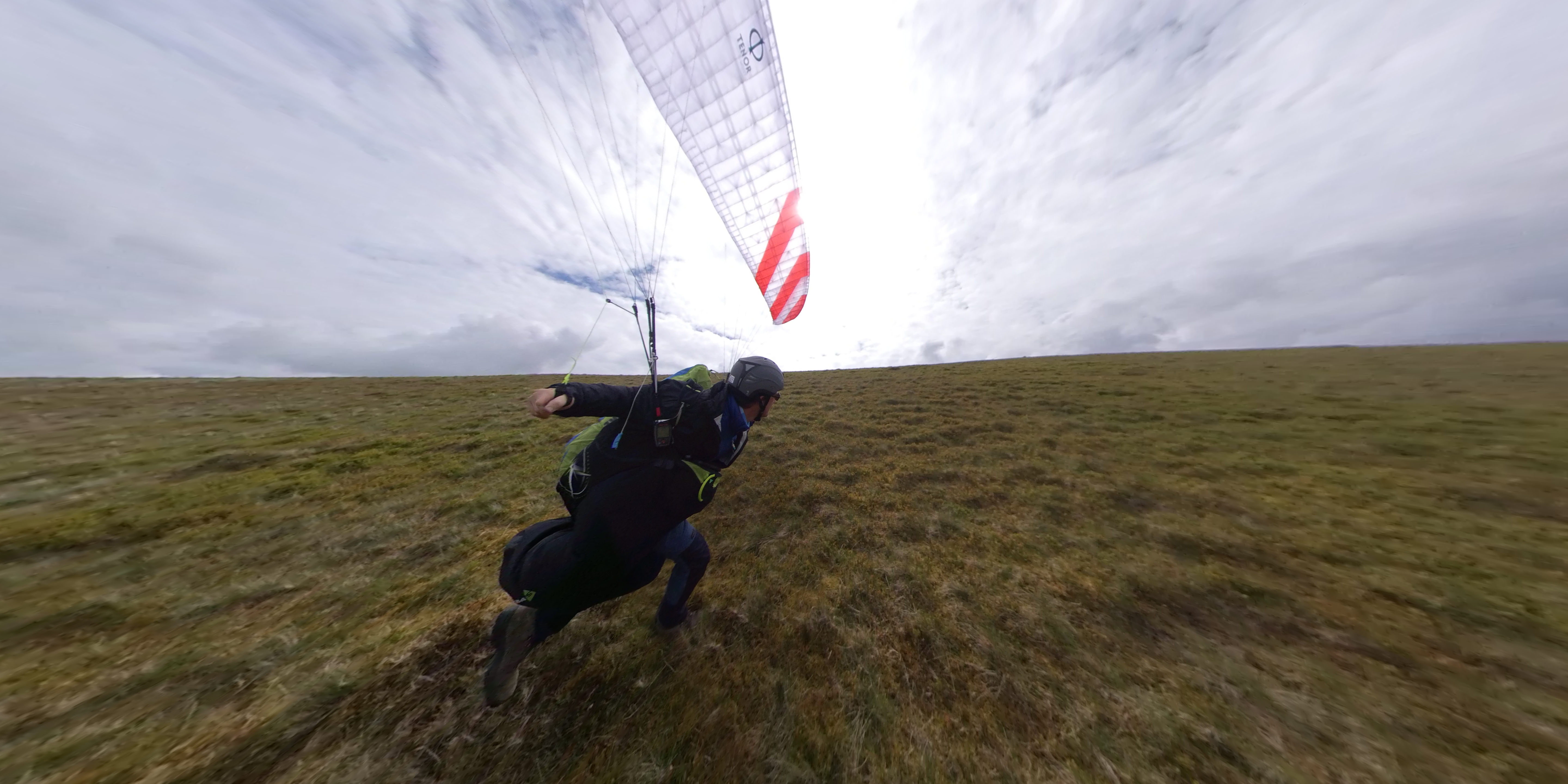
There is a growing Hike & Fly ‘scene’ in the UK, with the X-Lakes event (Northern England) and the Dragon Race (Wales). On the Continent there are many events to choose from. Longer ‘volbiv’ trips can be achieved anywhere there are mountains. It takes the focus off the numbers (XC league scores) and is more about adventuring through a landscape, on foot or in the air.
A few years ago we tried to get the scene off the ground with the Foot or Flybubble on the South Downs, but it seems harder to motivate the folk of more, ah, leisurely approach, to go adventure with a bag.
HIKE & FLY: Preparation
Part of this reluctance is due to the massive bags some pilots have acquired. Paragliding gear certainly went through a ‘heavy’ phase, but there are now some amazing setups you can buy that improve your enjoyment of random strolls and off-route exploration.
Check out my video for some ideas.
When your bag gets close to 10kg, it becomes fun. Some exercise helps to prepare your body for a day out in the hills. Take the dog for a jog, and you’ll be ready to go!
We recommend you have some experience of flying XC, a good knowledge of various flying sites, and a Pilot rating as a minimum (IPPI 4/5), as you’ll need to be making all your own decisions regarding finding a takeoff spot and judging the weather.
HIKE & FLY: Racing
When you take part in an event like the Dragon Hike and Fly you get the benefit of the collective – a weather briefing, local knowledge, a route to follow and other pilots to indicate the conditions. It is incredibly laid-back and welcoming of newcomers.

The higher level races (X-Pyr, X-Alps, Bornes to Fly) require you to have a support crew to provide food, water, and assistance. This can be a logistical challenge for many pilots and quite costly. These races also have high entry requirements, to ensure that inexperienced pilots aren’t risking too much by trying to chase the pros in conditions well beyond their limits. So build up your flying CV by logging performances in XC leagues, competitions, volbiv attempts, impressive peak challenges or smaller races.
The amateur events can be successfully attempted with either basic volbiv gear or simply relying on the assistance of other pilots, helpers and race organisers who often pitch in to help. There’s often a WhatsApp / Telegram group full of witty banter for the duration of the race.

HIKE & FLY: Groundwork
Viewranger is a free app which works very well, providing contour maps with marked trails that makes navigating the back-country fairly easy – provided you have battery power. The most essential item of hike and fly kit is an external battery pack. Choose wisely, because it’s heavy. If you’re smart, you can also download the entire area you are going to explore using your home Wifi, so you’re not reliant on spotty mobile signal to get your next map tile.

Hiking poles are not necessary, but they help when you have a lot of ascent to do, or a long way to go. Make sure they collapse small enough to fit in the back of your harness (not like those line-catching hazards strapped on the outside of the author's harness - since replaced).
Good shoes are essential. Many pilots use trail-running shoes, which have good hard grip for rocky trails. Some opt for hiking boots because mostly you’ll be hiking (not running) and the footfall is different. You’re also carrying a load, which running shoes aren’t designed for. Until your feet are well accustomed to doing hike-and-fly, I’d recommend mid-level boots. Whatever you use, wear them in first so you know they won’t give you blisters.

HIKE & FLY: The Flying Bit
We all love to fly, and I take any opportunity I can to do so, because you can’t ‘get lucky’ on the ground. Any thermal you encounter can take hours off your ascent and give you kilometres of ‘free gliding’. But sometimes it doesn’t pay to hike up. If you are only hiking up to go on still-air-glide to the valley floor (along the course line) it does not make sense. You’ll expend more energy and time on the ascent than a similar competitor walking. But if there is a significant ‘corner’ you can snip off the course by flying directly instead of looping on the roads, or if there is any chance of a bit of soaring and tailwind to extend your glide, then it’s worth the hike up. That’s assuming you know for sure that you will be able to launch.
That’s where the tactics come in. What’s the weather going to be like in 3 hours time? Where is the best launch site nearby? How much water should you take with you? How much energy do you have left in those tired legs? Managing your strategy is a real challenge: very frustrating when you get it wrong (and learn), very rewarding when you get it right (and win).

When you’re in the air, it pays to have an instrument that will indicate the route very clearly (XCtrack on a phone does fine, but I like the Skytraxx 2.1 or Syride Sysnav V3 because it means I can use my phone to display Viewranger trails, which helps to make smart moves before landing).
Flying is usually ten times faster than walking, because you can fly in straight lines, and you’re conserving energy, so it pays to be patient and not throw away your altitude by ‘racing ahead’ or leaping off the hill too early. The courses are usually set to be long and challenging, so you want to use all of the flyable time by staying in the air.

HIKE & FLY: Skills
Being prepared is half the race. Practice slope-landing, because it’s very useful to conserve your altitude and hike over technical challenges.
Practice landing in short/limited areas, because this improves your safety and confidence when considering a less-than-ideal transition.
Practice strong wind launching so you don’t get into trouble on that sketchy remote mountain that you will attempt to fly off (because you are too tired to consider walking down).
If you’re very bored, practice packing your wing fast and getting the resultant mess into a very compact shape so it carries well, tight against your back. And if you’re like me, you can spend endless merry hours further optimising your kit, stripping off excess grams, and working out what you absolutely must have to fly (and ditching the rest).
HIKE & FLY: Video tutorial
Greg offers a detailed route analysis and review of his decisions during the Dragon 2019. Take your own pace and enjoy the race!
Brought to you by Flybubble
Like what we do? The best way to thank and support us is to buy gear from us and recommend us to others. Review our service on Trustpilot and our products on Flybubble Shop. You can also subscribe to Flybubble Patreon. Thank you!

